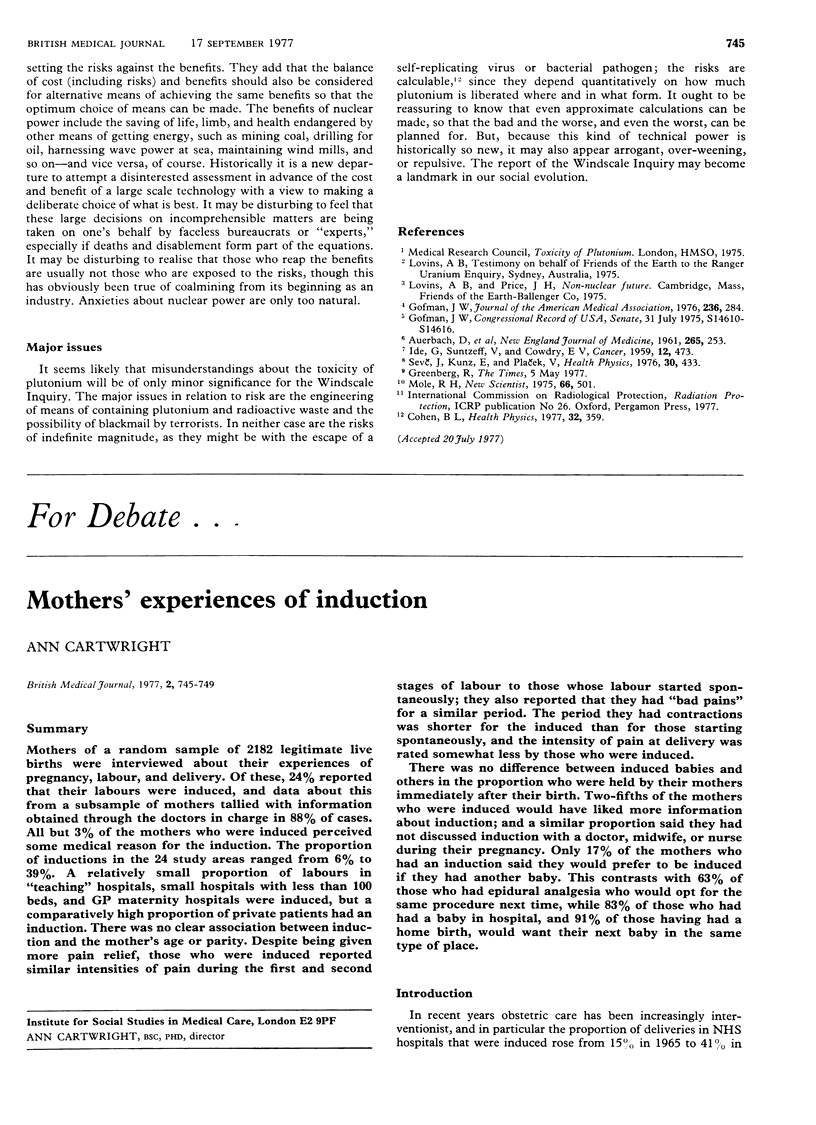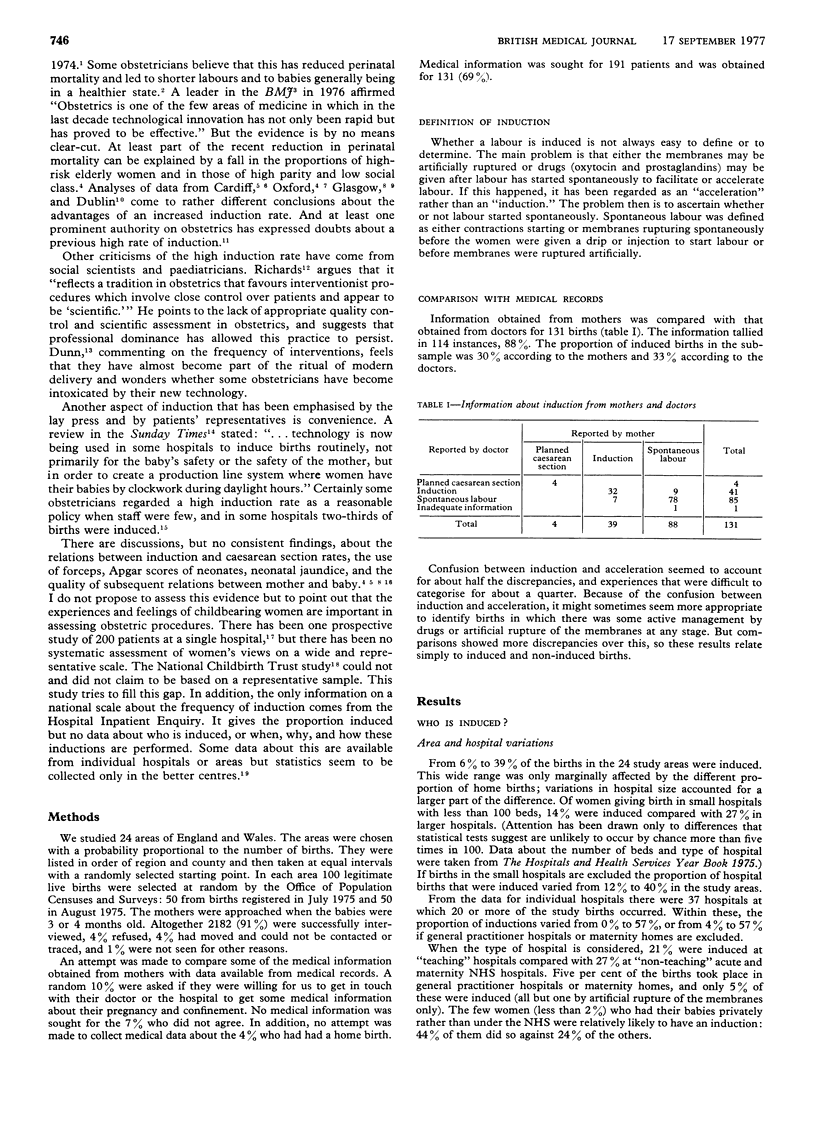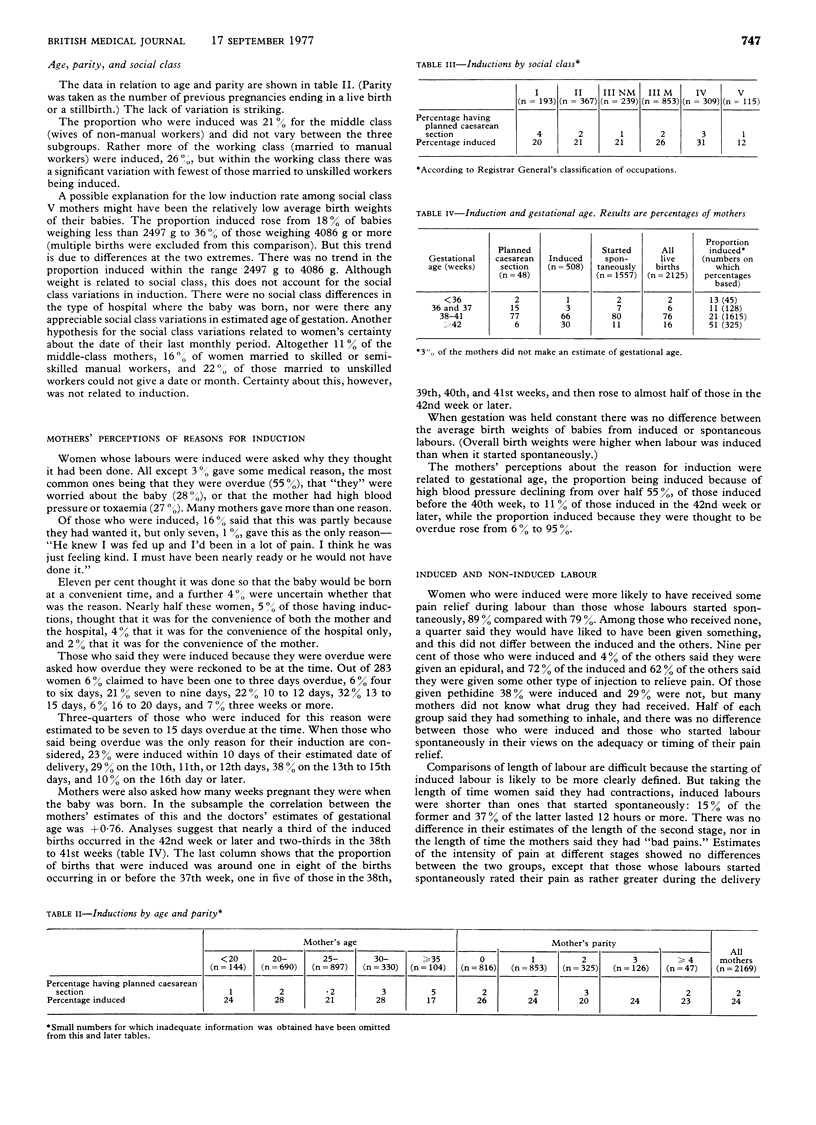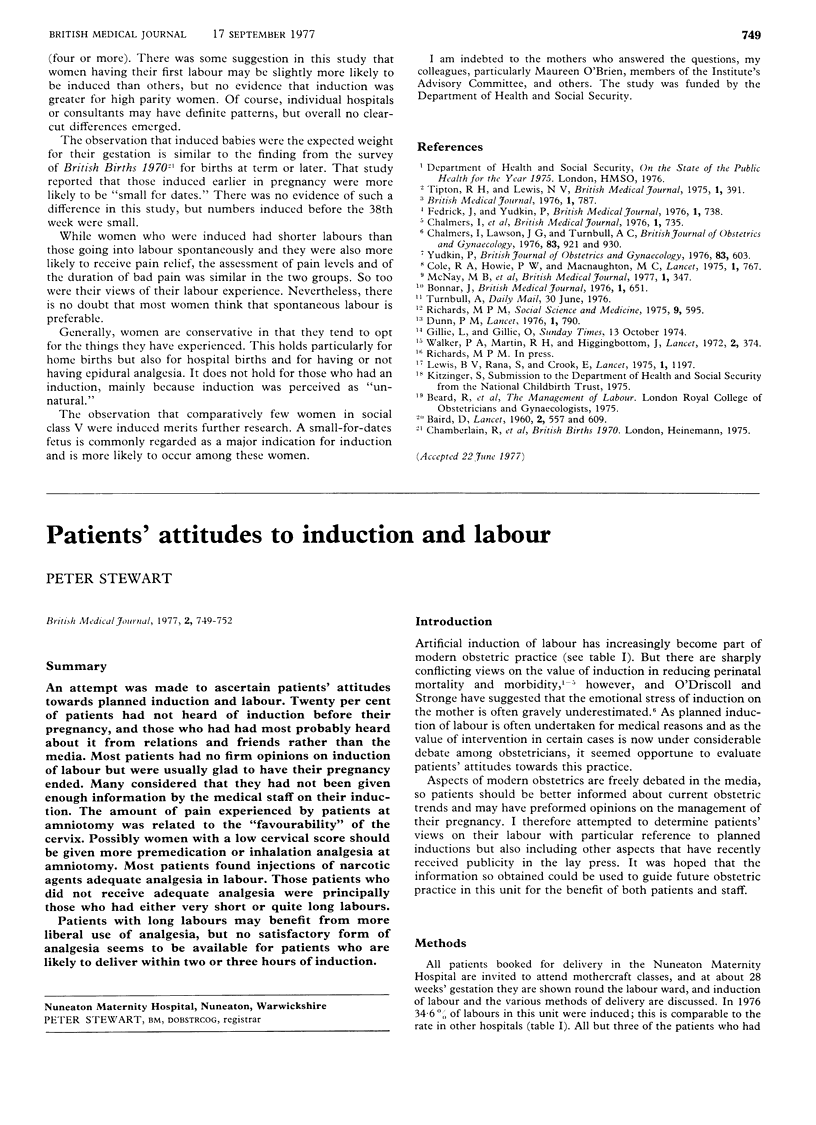Abstract
Mothers of a random sample of 2182 legitimate live births were interviewed about their experiences of pregnancy, labour, and delivery. Of these, 24% reported that their labours were induced, and data about this from a subsample of mothers tallied with information obtained through the doctors in charge in 88% of cases. All but 3% of the mothers who were induced perceived some medical reason for the induction. The proportion of inductions in the 24 study areas ranged from 6% to 39%. A relatively small proportion of labours in “teaching” hospitals, small hospitals with less than 100 beds, and GP maternity hospitals were induced, but a comparatively high proportion of private patients had an induction. There was no clear association between induction and the mother's age or parity. Despite being given more pain relief, those who were induced reported similar intensities of pain during the first and second stages of labour to those whose labour started spontaneously; they also reported that they had “bad pains” for a similar period. The period they had contractions was shorter for the induced than for those starting spontaneously, and the intensity of pain at delivery was rated somewhat less by those who were induced.
There was no difference between induced babies and others in the proportion who were held by their mothers immediately after their birth. Two-fifths of the mothers who were induced would have liked more information about induction; and a similar proportion said they had not discussed induction with a doctor, midwife, or nurse during their pregnancy. Only 17% of the mothers who had an induction said they would prefer to be induced if they had another baby. This contrasts with 63% of those who had epidural analgesia who would opt for the same procedure next time, while 83% of those who had had a baby in hospital, and 91% of those having had a home birth, would want their next baby in the same type of place.
Full text
PDF




Selected References
These references are in PubMed. This may not be the complete list of references from this article.
- BAIRD D. The evolution of modern obstetrics. Lancet. 1960 Sep 17;2(7151):609–614. [PubMed] [Google Scholar]
- Chalmers I., Lawson J. G., Turnbull A. C. Evaluation of different approaches to obstetric care: Part II. Br J Obstet Gynaecol. 1976 Dec;83(12):930–933. doi: 10.1111/j.1471-0528.1976.tb00777.x. [DOI] [PubMed] [Google Scholar]
- Cole R. A., Howie P. W., Macnaughton M. C. Elective induction of labour. A randomised prospective trial. Lancet. 1975 Apr 5;1(7910):767–770. doi: 10.1016/s0140-6736(75)92435-6. [DOI] [PubMed] [Google Scholar]
- Dunn P. M. Obstetric delivery today. For better or for worse? Lancet. 1976 Apr 10;1(7963):790–793. doi: 10.1016/s0140-6736(76)91624-x. [DOI] [PubMed] [Google Scholar]
- Fedrick J., Yudkin P. Obstetric practice in the Oxford Record Linkage Study Area 1965-72. Br Med J. 1976 Mar 27;1(6012):738–740. doi: 10.1136/bmj.1.6012.738. [DOI] [PMC free article] [PubMed] [Google Scholar]
- Lewis B. V., Rana S., Crook E. Letter: Patient response to induction of labour. Lancet. 1975 May 24;1(7917):1197–1197. doi: 10.1016/s0140-6736(75)93188-8. [DOI] [PubMed] [Google Scholar]
- McNay M. B., McIlwaine G. M., Howie P. W., Macnaughton M. C. Perinatal deaths: analysis by clinical cause to assess value of induction of labour. Br Med J. 1977 Feb 5;1(6057):347–350. doi: 10.1136/bmj.1.6057.347. [DOI] [PMC free article] [PubMed] [Google Scholar]
- Tipton R. H., Lewis B. V. Letter: Induction of labour and perinatal mortality. Br Med J. 1975 Feb 15;1(5954):391–391. doi: 10.1136/bmj.1.5954.391. [DOI] [PMC free article] [PubMed] [Google Scholar]
- Walker P. A., Martin R. H., Higginbottom J. Towards easier childbirth. Lancet. 1972 Aug 19;2(7773):374–374. doi: 10.1016/s0140-6736(72)91750-3. [DOI] [PubMed] [Google Scholar]
- Yudkin P. Problems in assessing effects of induction of labour on perinatal mortality. Br J Obstet Gynaecol. 1976 Aug;83(8):603–607. doi: 10.1111/j.1471-0528.1976.tb00896.x. [DOI] [PubMed] [Google Scholar]


